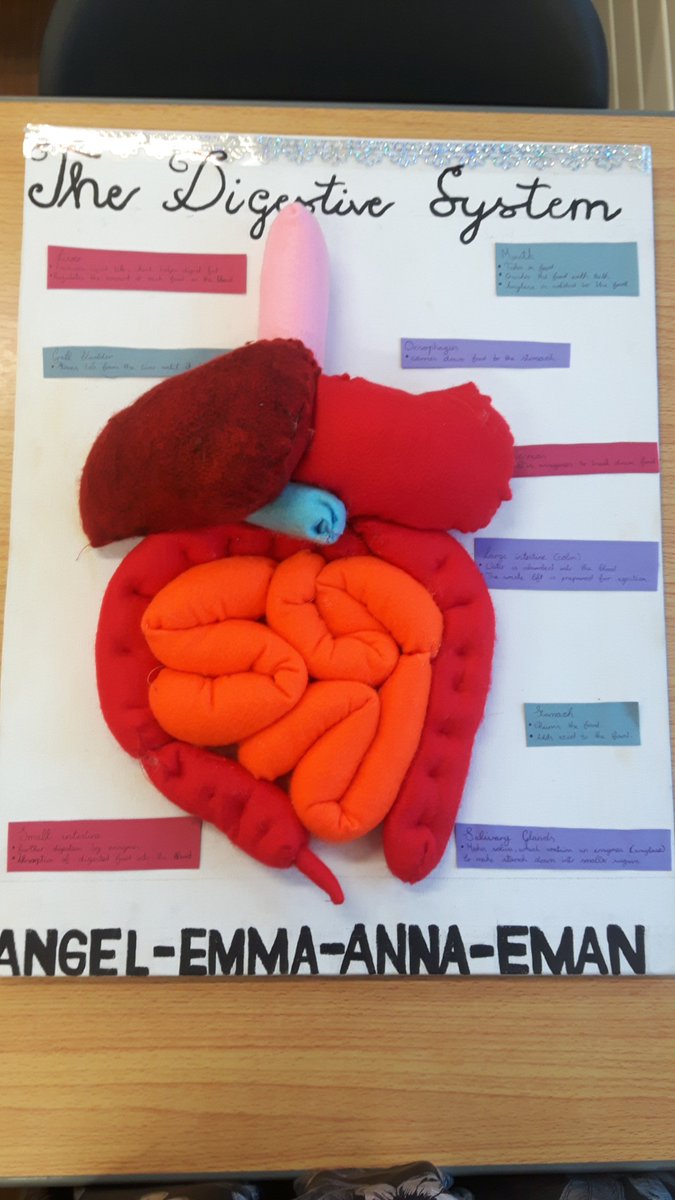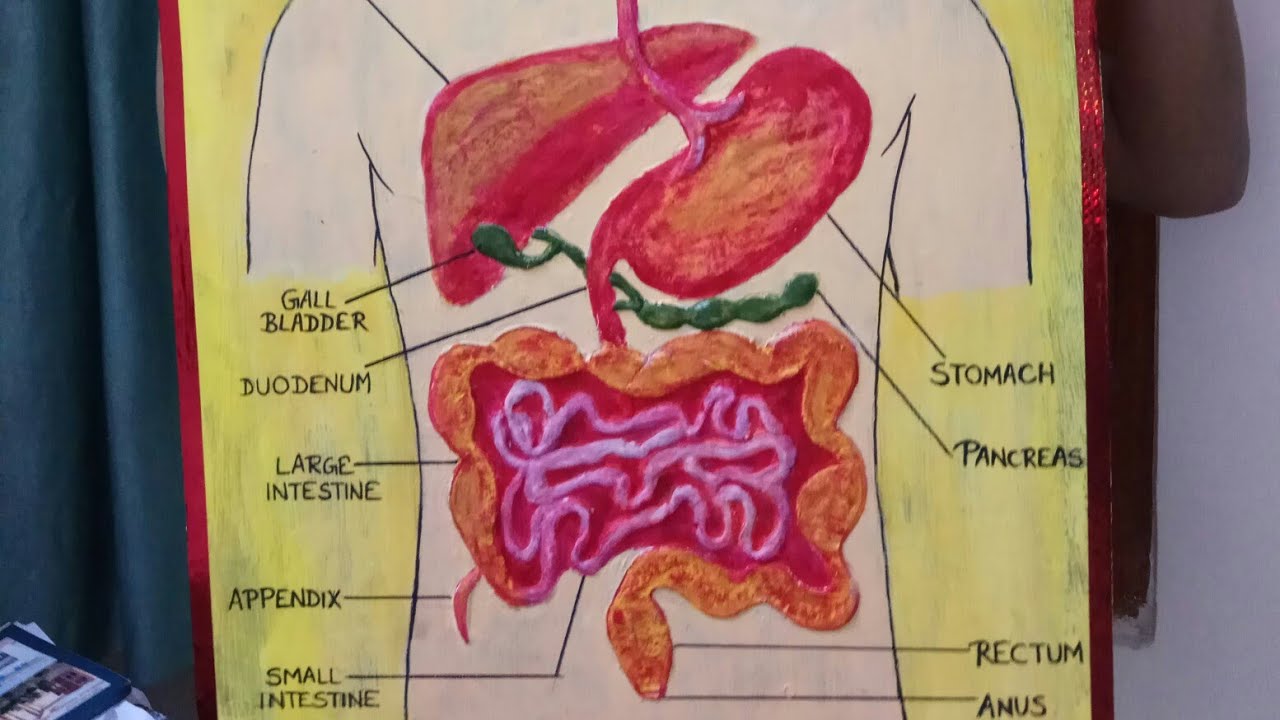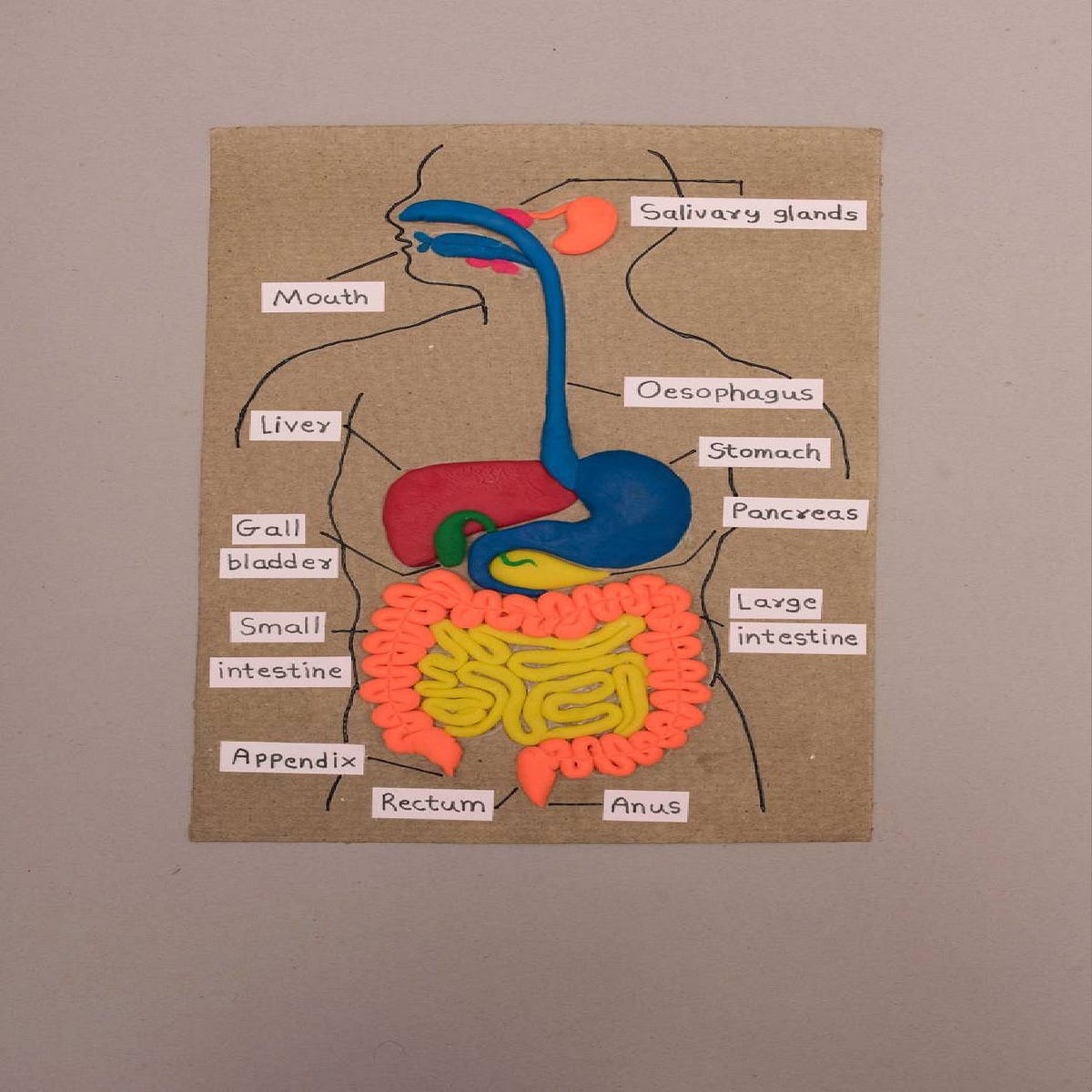Creating a digestive system model is a fantastic way to visualize how our bodies process food! Whether you're a student, a teacher, or just someone curious about biology, this hands-on project can make learning fun and engaging. By building your own model, you’ll gain a deeper understanding of each organ's role and how they work together. Plus, it’s a great opportunity to get creative and maybe even share your project with others. So, let’s dive into the materials you’ll need to get started!
Materials Needed for Your Model

Getting your hands on the right materials is crucial for building an effective digestive system model. Here’s a list of common items you’ll need:
- Base Material: A sturdy base like cardboard or a wooden board to support your model.
- Flexible Tubing: To represent the esophagus, intestines, and other tubular organs.
- Plastic or Foam Balls: These can symbolize food particles or stomach contents.
- Paint and Brushes: For adding color and detail to your model, making it visually appealing.
- Scissors and Glue: Essential for cutting and assembling your materials.
- Markers: To label different parts of the digestive system clearly.
- Crafting Items: Items like clay or papier-mâché can be useful for creating organs like the stomach and liver.
Optional materials might include:
- LED Lights: To add a fun interactive element to your model.
- Clear Plastic Containers: To simulate the stomach’s capacity and even demonstrate acid action.
Once you have gathered these materials, you’ll be well-equipped to start creating your model. Remember, the goal is not just to replicate the digestive system but also to understand the pathway food travels through our bodies. So, get your creative juices flowing and let's build something amazing!
Also Read This: Evaluating the Legitimacy of Rumble.com
3. Step-by-Step Guide to Building the Model

Creating a digestive system model can be a fun and educational project! Here’s a simple guide to help you through the process, using materials that you might already have at home or can easily obtain.
Materials Needed:
- Cardboard or foam board
- Colored markers or paint
- Plastic straws, balloons, or tubing (for the esophagus and intestines)
- Scissors and glue
- Paper for labels
- Optional: clay or playdough (for modeling stomach contents)
Step 1: Plan Your Model
Before diving into the construction, sketch out your digestive system on paper. Identify the main components you want to include, such as:
- Mouth
- Esophagus
- Stomach
- Small intestine
- Large intestine
- Rectum and anus
Step 2: Create the Base
Start with a sturdy base using cardboard or foam board. This will be the foundation for your digestive system model. Make sure it's large enough to accommodate all the parts you plan to create.
Step 3: Build the Organs
Using colored markers or paint, create each organ:
- Mouth: Use cardboard to create a mouth and add details like teeth and a tongue.
- Esophagus: Cut a piece of plastic straw or a balloon to represent the esophagus. Attach it from the mouth to the stomach.
- Stomach: Shape a piece of cardboard or use a balloon to create the stomach. You can even fill it with clay or playdough to simulate food.
- Intestines: Use long pieces of tubing or straws to represent the small and large intestines, coiling them appropriately on your base.
- Rectum and Anus: Finish with a small piece of straw or cardboard for these last parts of the digestive system.
Step 4: Label the Parts
Using small pieces of paper, create labels for each part of the digestive system. This not only adds clarity to your model but also enhances its educational value.
Step 5: Assemble Everything
Now it’s time to assemble your model! Glue all parts to the base, ensuring everything is secure. Make adjustments as needed to ensure everything fits well and looks cohesive.
Also Read This: How to Cast Dailymotion on PlayStation to Enjoy Your Favorite Content on the Big Screen
4. Tips for Making Your Model Engaging

Making your digestive system model engaging is key to capturing attention and enhancing learning. Here are some creative tips to elevate your project:
1. Use Color and Creativity
Bright colors can make your model visually appealing. Paint each organ with realistic colors, or go wild and use neon shades! Consider adding fun textures using materials like fabric or glitter.
2. Incorporate Movement
Think about how to show the movement of food through the digestive system. You can use a simple mechanism like a pulley to move "food" through the esophagus or intestines. This adds a dynamic element to your model!
3. Add a Fun Interactive Component
Consider including a quiz or fun facts section. Create small cards with questions about the digestive system that viewers can pick up and answer as they explore your model.
4. Use Multimedia
Enhance your project with digital elements. Create a slideshow or video explaining the digestive process and link it with a QR code on your model for others to access easily.
5. Foster Discussion
Invite friends or classmates to engage with your model. Pose questions or encourage them to share what they know about digestion. This will make the learning experience more interactive and enjoyable!
Incorporating these tips will not only make your model captivating but also foster a deeper understanding of how the digestive system functions. Happy building!
Also Read This: How to Make Doll Makeup Fun Crafting Ideas on Dailymotion
5. Educational Benefits of Building a Digestive System Model
Building a digestive system model is not only a fun and engaging project, but it also comes packed with educational benefits that can enhance understanding in various subjects. Here are some key advantages:
- Hands-On Learning: Creating a model allows students to engage with the material physically. This tactile experience can help cement concepts in their minds far better than traditional textbook learning.
- Visualization of Complex Processes: The digestive system is intricate, involving numerous organs and processes. A model can help visualize how food travels through the body, how nutrients are absorbed, and how waste is expelled.
- Critical Thinking and Problem-Solving: Assembling a model encourages students to think critically about how to represent different organs and their functions accurately. This process can lead to discussions on topics such as health, nutrition, and biology.
- Collaboration Skills: Building a model is an excellent group project. It fosters collaboration, communication, and teamwork, as students strategize on the best way to construct their digestive system.
- Integration of Technology: Modern educational projects often incorporate technology. Students can research online or use 3D modeling software to enhance their projects, merging traditional learning with digital skills.
Furthermore, when students create a digestive system model, they often find themselves more invested in their learning. They might ask questions like, "What happens in the stomach?" or "How does the liver contribute to digestion?" This curiosity can lead to deeper exploration of biology and health sciences.
On a broader scale, understanding the digestive system has implications for health and wellness. Students can learn about the impact of diet on digestion and overall health, making connections to real-world issues like obesity and nutrition. This knowledge is invaluable as they navigate their own dietary choices in the future.
6. Conclusion and Additional Resources
In conclusion, creating a digestive system model is a rewarding project that offers numerous educational benefits. Not only does it help students grasp complex biological concepts, but it also fosters critical skills like teamwork, problem-solving, and technological literacy. By actively engaging with the material, students can develop a lasting understanding of how the human body functions.
If you're ready to embark on this exciting project, here are some additional resources that can help you along the way:
- Books: Look for titles like "The Human Body: An Illustrated Guide to Its Structure, Function, and Disorders" for in-depth knowledge on anatomy.
- Websites: Websites like Khan Academy and NIH Health Topics offer free courses and articles on the digestive system.
- Videos: YouTube has a plethora of educational channels, such as Crash Course, which provide engaging explanations and visual representations of digestive processes.
- DIY Kits: Consider purchasing a model kit from educational supply stores or online retailers. These kits often come with detailed instructions and materials needed for assembly.
With the right resources and enthusiasm, you’ll not only create a fantastic digestive system model but also ignite a passion for learning about human biology that could last a lifetime. Happy building!
 admin
admin








